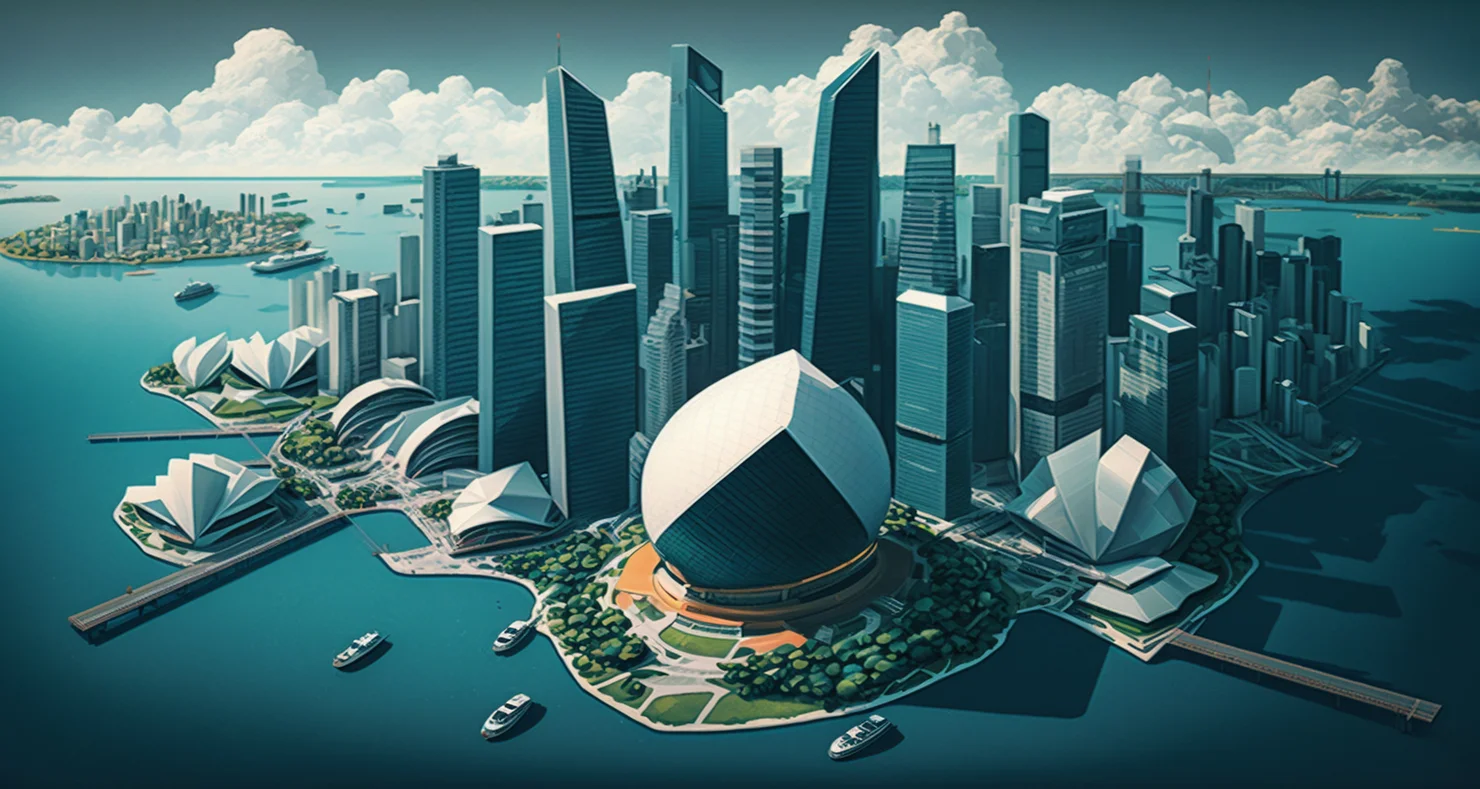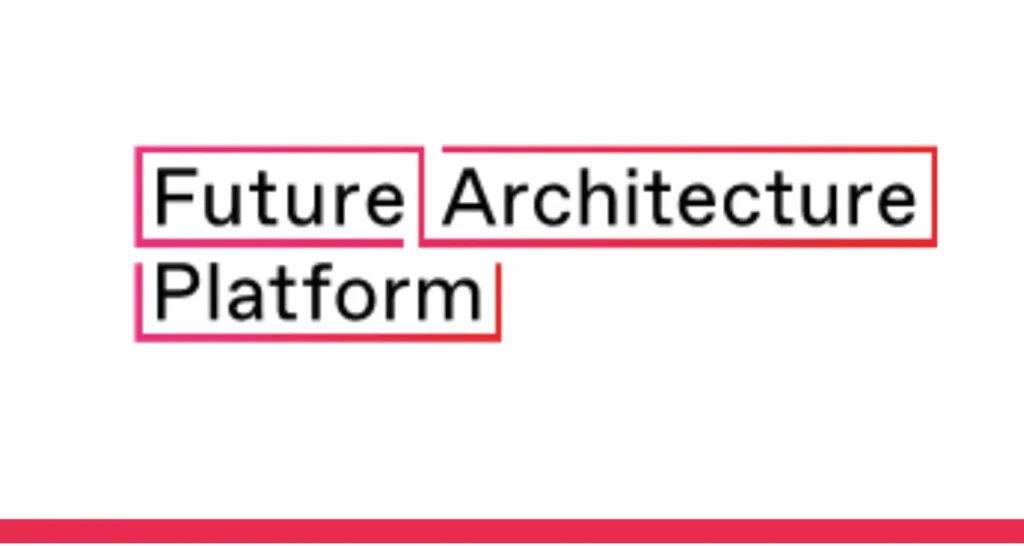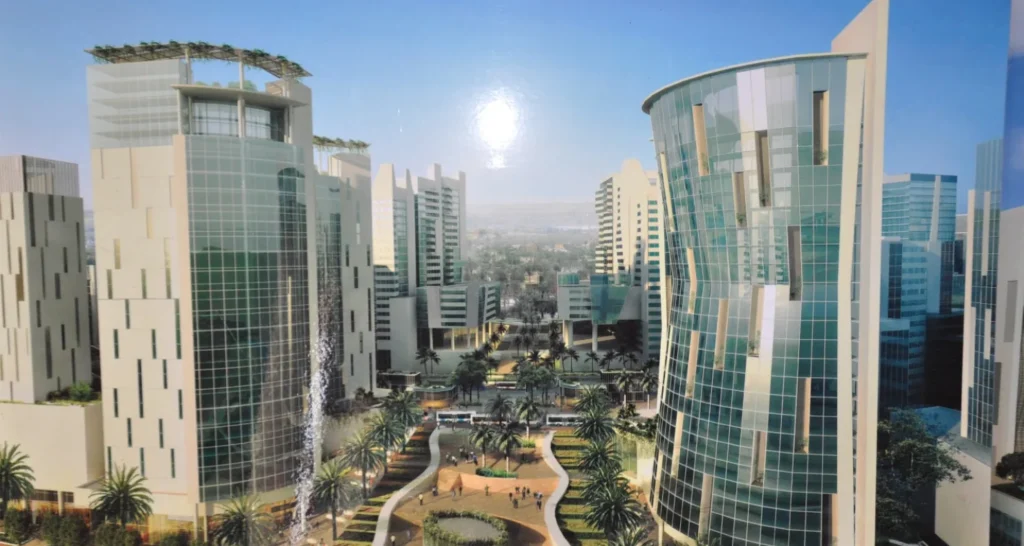Singapore smart city, an island city-state off southern Malaysia, is a global financial center with a tropical climate and multicultural population. Its colonial core centers on the Padang, a cricket field since the 1830s and now flanked by grand buildings such as City Hall, with its 18 Corinthian columns. In Singapore’s circa-1820 Chinatown stands the red-and-gold Buddha Tooth Relic Temple, said to house one of Buddha’s teeth. Singapore smart city project…
How Singapore a smart city facts
Singapore is considered to be one of the world’s leading smart cities due to its extensive use of technology and innovative approaches to urban planning. Here are some facts about how Singapore is a smart city:
Singapore smart city has a comprehensive network of sensors and cameras that monitor traffic, public safety, and environmental factors such as air and water quality.
The city-state has implemented an extensive public Wi-Fi network, which provides free access to residents and visitors.
The government has launched a range of smart city initiatives, including an autonomous vehicle trial, a smart lighting project, and a virtual assistant service that provides real-time information to citizens.
Singapore is home to one of the world’s most advanced public transportation systems, which includes an extensive network of buses, trains, and taxis. The transportation system is integrated with a range of smart technologies, including contactless payment systems and real-time tracking of vehicles.
Singapore has implemented a range of sustainable urban planning initiatives, including green buildings, park connectors, and a comprehensive recycling program.
The city-state has a highly developed digital infrastructure, which includes high-speed broadband networks and advanced cloud computing systems.
Singapore smart city has a strong focus on innovation, with a range of research and development programs focused on areas such as robotics, artificial intelligence, and the Internet of Things.
Overall, Singapore’s focus on technology, innovation, and sustainable urban planning has helped to make it one of the world’s leading smart cities.

Singapore smart city projects
Singapore has implemented a range of smart city projects to enhance its urban infrastructure, promote sustainability, and improve the quality of life for its citizens. Here are some examples of projects that have already been completed and others that are planned for the future:
Projects completed:
Smart Nation Sensor Platform: The Smart Nation Sensor Platform is a network of sensors and cameras that monitor traffic, weather, and environmental factors, such as air and water quality, in real-time.
Beeline: Beeline is a demand-responsive bus service that uses data analytics to optimize routes and schedules, reducing wait times and improving efficiency.
Virtual Singapore: Virtual Singapore is a 3D digital model of the city that provides real-time information on traffic, weather, and other factors to help city planners make more informed decisions.
Smart Lighting: Singapore has implemented a smart lighting system that uses sensors to adjust the brightness of streetlights based on pedestrian and vehicular traffic.
Smart Homes: Singapore has launched a range of smart home initiatives, including the Home Energy Management System, which uses data analytics to optimize energy use and reduce costs.
Projects planned for the future:
Autonomous Vehicles: Singapore is planning to launch a fleet of autonomous vehicles that will operate on public roads, providing on-demand transportation to citizens.
Punggol Digital District: The Punggol Digital District is a new development that will bring together businesses, researchers, and students in a hub focused on innovation and technology.
Smart Water Management: Singapore is implementing a smart water management system that uses sensors to monitor water quality and usage, and to identify leaks and other issues.
Smart Waste Management: Singapore is planning to launch a smart waste management system that uses data analytics to optimize garbage collection routes and schedules.
Smart Traffic Management: Singapore is implementing a smart traffic management system that uses sensors and data analytics to optimize traffic flow and reduce congestion.
Overall, Singapore’s smart city projects focus on enhancing the quality of life for its citizens, improving sustainability, and leveraging technology to improve efficiency and productivity.
Digital Government, Smart Nation: Singapore smart city projects

Singapore’s ambitious Smart Nation initiative is about harnessing technology to stay ahead as a global city and to improve lives and livelihoods for all.
What Is Smart Nation?
Through the Smart Nation initiative, we aim to make Singapore “an outstanding city in the world…for people to live, work and play in, where the human spirit flourishes.”1 To achieve this, we have to apply technology systematically and extensively, rather than in a piecemeal manner, to improve the lives of our people.
But first, why does Singapore need to be a Smart Nation? Growth in two main factors of production drove Singapore’s growth in the first 50 years: our labor force and capital investment. As our population ages and the inflow of immigrants slows (given our finite physical space), labor as a factor of production will grow more slowly. Consumption as a percentage of GDP will also likely rise relative to investment as Singapore’s population ages. The main contribution to growth and prosperity will have to be total factor productivity, which could be achieved through a mix of technology and better business processes.
Besides continuing to build prosperous and flourishing lives for Singaporeans, Smart Nation can be a reason why home-grown talent would want to continue living here, and why foreign talent would want to relocate here. This is the magnetic pull exuded by the world’s leading cities, such as New York, London, San Francisco, Shanghai and Tokyo.
Smart Nation is also necessary to accelerate the process of integrating technology into our collective efforts to improve lives, lest Singapore falls behind relative to other global cities. Modern-day classrooms, hospitals and workplaces; the very concepts of retirement and a pension; the city in its horizontal spread (trains and cars) and vertical reach (elevators)—these improvements to human wellbeing were enabled by the first and second Industrial Revolutions. The nature of all these will shift again as the technologies of the fourth Industrial Revolution change our lives. The first two Industrial Revolutions allowed us to automate menial, physical chores. The third and fourth Industrial Revolutions are allowing us to automate even more of such tasks, and to devote a greater proportion of our lives to meaningful, enriching activities. To give a personal example: it used to be that vacations could be a stressful experience, because of the unfamiliarity with a new environment. These days, with Google Maps and review sites, traveling has become much less anxious and a lot more enjoyable.

Smart Nation: What It Takes
Where is Singapore Today with its digital transformation?
Smart Nation Framework - New way of working and thinking

Digital Govt Blueprint
SNDGG has also been working with all Ministries to develop comprehensive plans for digitalization. The first round of plans, completed in June 2018, was useful in quickly identifying “no-regrets” digital initiatives that Ministries felt would be high in impact. Some of the initiatives, such as the Ministry of Home Affairs’ digitization of death registration and the Ministry of the Environment and Water Resources’ automated meter reading infrastructure that enables near real-time information on water consumption patterns, will significantly improve service delivery and how agencies operate.
However, the first round of plans was ultimately a list of projects. From 2020, Ministries will include digitalization planning in their strategic planning cycle, so the plans are linked to and support the Ministries’ missions. Integrating with the strategic planning cycle also means resourcing, data requirements, and capability development will be simultaneously considered.
In addition, Ministries will be encouraged to explore digital technologies beyond application development, such as artificial intelligence (which allows more personalized and anticipatory services), data analytics (which allows more evidence-based and data-driven policymaking), and Internet of Things (IoT) or smart systems (which will go much further in creating a good living environment in Singapore). An agency that has made good progress on this front is the Ministry of Manpower, which has deployed cameras and sensors to improve the monitoring and enforcement of workplace safety at construction sites.
Key Milestones - Starting from the Top
Policies and strategies, however well laid, can only have a chance of success if processes and structures are designed to facilitate the harnessing of technology.
For example, we are witnessing a paradigm shift where agencies are beginning to see technology not just as an expense, but also as an investment in new strategic capability: that it is about how technology can help agencies reach topline growth (faster time-to-market for services, improved service delivery) in achieving mission objectives. This is not to say that we are not striving to be cost-efficient in using technology, but that cost-efficiency should not be the only consideration.
But even if agencies are to treat technology as a strategic capability, conventional approaches to resourcing do not allow projects to be started quickly. The traditional funding cycle takes place only once a year, and if the project proposal is supported, there is still the calling for and then evaluation and awarding of tenders. For in-sourced projects, time is needed to hire developers. To put this in perspective: it can often take longer to obtain the resources for a project than to build a prototype. In addition, the project team has to work out pricing and commit to recovering system costs, before they have even had the chance to work out requirements with users.
We are witnessing a paradigm shift where agencies are starting to see technology as a strategic capability or profit center.
Over the course of 2018, SNDGG worked with the Ministry of Finance (MOF) to revise this resourcing approach, to facilitate the Government’s exploitation of technology. MOF has now implemented a new resourcing framework to enable more agile digitalization, allowing for nimble initiation of pilots and proofs-of-concept, to test hypotheses or assumptions before scaling. To date, about 40 projects have received funding through this framework. Some interesting ideas include a computer vision-powered drowning detection system and speech-to-text software.
If we are to digitalize effectively, the process of integrating policy/ops with technology must also be improved. Good policy/ops-tech integration happens when the policy/ops communities and technologists know how technology can best be applied to achieve agencies’ missions, and work together to achieve them. The lack of policy/ops-tech integration today is reflected in anecdotes of designers and engineers complaining about “announcement-driven development”, which happens when they are committed to project deliverables—without prior consultation—by their policy counterparts. Business owners often decide on the solution before the technical team of designers and engineers has done their user research.
To improve ops-tech integration at the highest level, we have revised organizational structures. We have appointed a Chief Digital Strategy Officer (CDSO) at the Deputy Secretary level in every Ministry, to oversee delivery on their Ministry’s DGB targets and digitalization plans. The CDSO is supported by the Ministry’s CIO, to encourage management-level conversations on how technology can support business needs. The CDSO also coordinates and has clear lines of authority over the ICT and Digitalisation Steering Committees within their Ministry, which also involve agencies’ CIOs, Chief Data Officers and Chief Information Security Officers (CISOs).
Revised Gov Structure Integration
Beyond structures, policy/ops-tech integration can be achieved if policymakers lay down clearly the outcomes they want to achieve or the problems they want to solve, and then give engineers sufficient autonomy to research and come up with technical solutions. We must develop solutions that are evidence-based and driven by user research.
One of the best ways to achieve policy/ops-tech integration is through agile software development, where policy or ops officers work closely with the technical team—and in some cases, are even co-located with them—and constantly iterate their solution through testing with users. This approach to software development is gaining recognition in the public service, and together with the growing awareness that digitalization is a priority, we are witnessing an unprecedented opportunity to build an engineering culture in the public service.
A third example of a process we need more of is giving space to tech-push and whitespace projects. Tech-push goes beyond ops-tech integration and gives engineers freer rein in how to innovate. We have seen the value of tech-push: in fact, many of GovTech’s products and platforms were developed this way, without any business owner. Today, these products and platforms, such as Beeline and Moments of Life are well accepted and considered mainstream.
To structurally enable tech-push and white space innovation, SNDGG is starting a new digital experimentation and implementation unit. The unit will operate in a sandbox environment, where officers not only get to develop new products, but also test future directions for ICT policies, and try out new organizational approaches to building and running tech organizations—including in traditionally non-ICT areas such as HR and procurement. We expect this unit to model itself on how a modern tech organization should look like, and have its practices adopted by the rest of government where relevant.
The fourth set of process and structural changes that have been forged is having multi-functional, multi-agency teams to provide integrated services to citizens. The Government had previously experimented with this through the establishment of the Municipal Services Office and its OneService app, and more recently, the Moments of Life project. Unlike most task forces, which disband once they deliver a product, we need such teams to remain: because in the digital age products have to be constantly updated and upgraded beyond their “delivery” date. As a result, civil servants may increasingly find themselves part of matrix organizations, where they have a primary job, but also secondary jobs in such multi-agency task forces.
Civil servants may increasingly find themselves part of matrix organizations, where they have a primary job, but also secondary jobs in multi-agency forces.
The last example of a change in SNDGG’s organizational construct is the designation of a functional leader or professional head of the Information and Communications Technology and Smart Systems (ICT&SS) community in the Government. This functional leader is the Government Chief Digital Technology Officer (GCDTO). The GCDTO will increase the coherence and lift the standards of the ICT&SS community through the creation of common concepts of operations, common platforms and technical standards, common competency frameworks, and training, as well as a common HR scheme.
Projects and Systems showing early results
Smart Nation Projects - Building up the Community
To build a Digital Government in support of a Smart Nation, we need a sizeable bench strength of skilled engineers. In particular, we want to hire specialists or peak technical talent, and engineers with experience managing big technology projects. We need to partner with the private sector better and reach out to citizens to make sure the design of our digital products and services are informed by actual experiences and user research. Smart Nation is ultimately a whole-of-nation effort, and we need the private and people sectors to play their part also.
To attract tech talent, GovTech’s HR scheme has been revised to match the attractive salaries tech talent would otherwise command in the private sector. We are also stepping up recruitment of overseas Singaporeans who have worked in technology companies, having organized Singapore Tech Forums in the Bay Area for the past two years. Through the Forum, we share how Singapore’s dynamic tech ecosystem can support their ambition, and that there are abundant opportunities whether they join the public or private sector here. We have a Smart Nation Fellowship program that allows overseas Singaporeans who are working in the private sector to take a three- to six-month stint with us, to collaborate on digital or engineering solutions that will have an impact on people’s lives.
At the same time, we have to improve the management of tech talent within the Public Service. To this end, we have developed a common HR scheme for digital technologists, so that they can take on ICT&SS roles across different agencies to enhance their exposure and contribution. The scheme allows them to pursue leadership opportunities, either becoming a specialist or assuming a leadership role in an ICT&SS agency. A Talent Leadership Committee has been established in tandem, to more systematically grooming and plan for succession for our talents and key ICT&SS positions. The Administrative Service has also established an engineering track that allows Administrative Officers to spend more time in engineering jobs to deepen their expertise. This is modeled after the Singapore Armed Forces Overseas Scholarship Scheme that allows officers more sustained stints on the ground to build deep expertise.
Our tech talent can join many agencies. SNDGG has established a Centre of Excellence for ICT&SS, comprising the C3 Capability Centre in the Defence Science and Technology Agency, the Geospatial Capability Centre in the Singapore Land Authority, and GovTech’s Capability Centres in five areas: Application Design, Development & Deployment, Data Science & Artificial Intelligence, Sensors & IoT, Government Cybersecurity, and Government Infrastructure. These Capability Centres and the talent within them have been crucial in rebuilding engineering capabilities within the government, and have been both the cause and result of the Government being able to in-source ambitious and socially meaningful digital projects.
However, given the finite size of the Government’s ICT&SS workforce, we must go beyond the public sector to raise the capabilities of our partners in the private sector. We have been increasingly open to co-sourcing and sharing our approach to software engineering with the private sector, as well as encouraging them to build applications using components of the Singapore Government Technology Stack. In October 2018, we hosted our inaugural STACK Developer Conference, which saw 1,200 attendees—more than half of whom were from the industry. The feedback for STACK was positive, with attendees appreciating the Government sharing its technology roadmaps. We are targeting an even bigger Developer Conference in 2020.
We need to partner the private sector better and reach out to citizens to make sure the design of our digital products and services are informed by actual experiences and user research.
This sharing is not one-way. Leading cloud service providers like Amazon, Google, and Microsoft are not just supporting the migration of Government systems, but sharing best practices with our IT teams and helping to train and certify them. GovTech has also come up with a Digital Technology Attachment Programme, to let our engineers gain industry exposure through a short stint with partnering companies, and a Technical Mentorship Programme that matches our project teams with local or overseas technical mentors. I am glad to report that all mentorship opportunities with Silicon Valley-based mentors have been taken up.
Finally, becoming an effective digital government demands that we reach out to our citizens. MCI has programs to raise the digital readiness of the public, and SNDGG co-creates with the public by involving them in user research for digital products, as well as getting them to test beta applications. Through a new program, Smart Nation Co-Creating with People Everywhere (SCOPE), we partner with agencies such as the People’s Association and the National Trade Union Congress, leveraging their outreach events to garner public feedback on products under development. We believe that this increases their own citizens’ feel towards these products, and makes them more inclined to use the products once they launch.
Global Emergence of Smart City
The explanation of Singapore's Smart Nation Concept
Evolution of Singapore National Technology Policy
The smart city is not, in fact, a dramatic shift for Singapore. Singapore has been comprehensively exploiting technology to run the country: there are various systems and tools in different sectors that facilitate decision-making, improve service standards, and achieve a high quality of life for the citizens. Most importantly, Singapore has adopted an integrated approach in the planning of the country and subsequent implementations, which is smart governance at the strategic level, to begin with.
Singapore’s global leadership in technology was stimulated as early as 1981 with the formation of the National Computer Board (NCB). President Tony Tan, then-Minister for Trade and Industry, demonstrated foresight when he said: “Our success in computerization will also depend on how our general population reacts to the changes that are happening and that will continue to happen unabatedly. The computer may be a tool for professionals but it will soon be a common feature in offices, factories, schools, and the home” (1983). This crucial step, which preceded the advent of the internet and modern Infocomm technology, marked Singapore’s entry into the knowledge economy.
In 1998, the NCB was tasked with developing the IT2000 Masterplan for Singapore. Its vision was to “Transform Singapore into an Intelligent Island, where the use of information technology is pervasive in every aspect of our society, at work, at home, and at play.” By 2003, Singapore’s Economic Review Committee aimed to position Singapore as a Living Lab in which to create, test, commercialize, and deploy innovative and complex ICT solutions; its report emphasized that “ICT will be an integral part of the economy and society, that will transform the way people live, work, learn and play”. These plans were further articulated in the Intelligent Nation 2015 Masterplan. The current Smart Nation initiative again reiterates that “advances in digital technology
have opened up new possibilities to enhance the way we live, work, play, and interact.”(2016) Repetitive language aside, Singapore’s consistent focus on the adoption of cutting-edge Infocomm technology as an economic driver is clear. Singapore’s Smart Nation journey began long before the articulation of the current vision in 2014.













